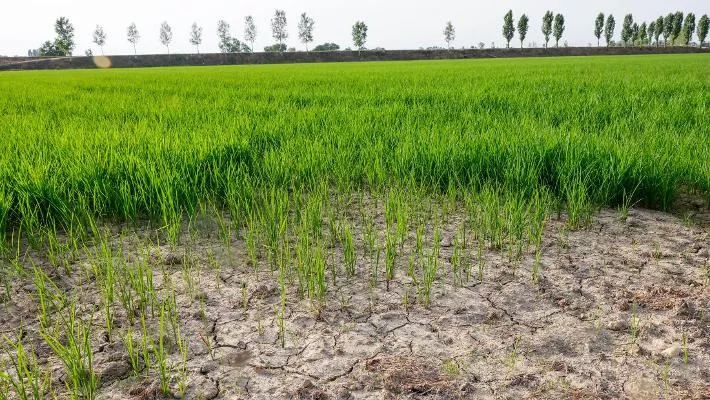RICE harvest 2022 – What sauce will we be eaten?

While many food sectors are affected by the crisis, the Italian rice market seems to be one of the worst managed.
Italian rice mills have already been facing, for many months, a drastic increase in the cost of energy, to which is added that of logistical costs, packaging etc …
And then the weather has driven the point home!
Low rainfall since the winter 2021/2022 has resulted in reduced water availability for spring crops throughout the north of the country.
Over the next two seasons, above-normal temperatures exacerbated the situation by causing delays in crop development.
As a reminder, the Po has experienced one of its lowest levels in the last 70 years…
Not all rice farmers were able to irrigate their fields and many were abandoned early.
The provinces of Pavia, Milano, Lodi and part of Piemonte were the most affected areas.
According to studies conducted by the Ente Nazionale Risi, it would be 3000 hectares of rice lost for the Piedmontese region and not far from 23,000 hectares for Lombardy.
To these losses are added damaged crops estimated at 37/40% in the Pavese region where many small grains and green grains are to be deplored.
The harvest is still ongoing and farmers are taking their time.
On the one hand to optimize their costs of drying, on the other hand because they expect paddy rice prices to rise.
At the Vercelli market, quotations are starting to come out but business is slow to be done.
Despite already high levels of conventional paddy rice – 460/480 EUR/T EXW farmer for Long B and 530/580 EUR/T EXW for round varieties such as Balila, Centauro and other similar – producers are waiting for more opportune times.
As for most rice mills, bluff or not, they seem not to be in a hurry to buy and would still have full stocks from Asia.
For organic rice, the delays seem even longer.
Paddy rice is still not listed on the main markets and the factories have few samples to get their teeth into.
However, the main part of the harvest will be finished by the end of October and, in the end, according to the operators, we must expect a price increase of the finished product of the order of at least 20 to 30% compared to the previous season.
It should be noted that the Italian government has decided to release 15 million euros to help the country’s rice sector.
However, potential beneficiaries consider that this aid will be far from sufficient and that they could wait for many months or even years before seeing it flow.
What about the rest of Europe?
Spain would also experience heavy losses due to smaller seeded areas.
In France, the surfaces would have stabilized at 11,000 hectares, 3,000 organic and 8,000 conventional.
The harvest now seems to be well advanced and the Camargue rice farmers seem to be rather satisfied with the yields.
Pressure on prices is maintained but unlike other countries, there does not seem to be any reduction in surface areas or harvest problems.
On the Asian continent, one of the major events is the introduction, in India, since September 9, of duties of up to 20% on the export of rice other than parboiled and Basmati.
As for broken rice, export is totally prohibited.
In this context, the 2022/2023 campaign promises to be very complicated…



